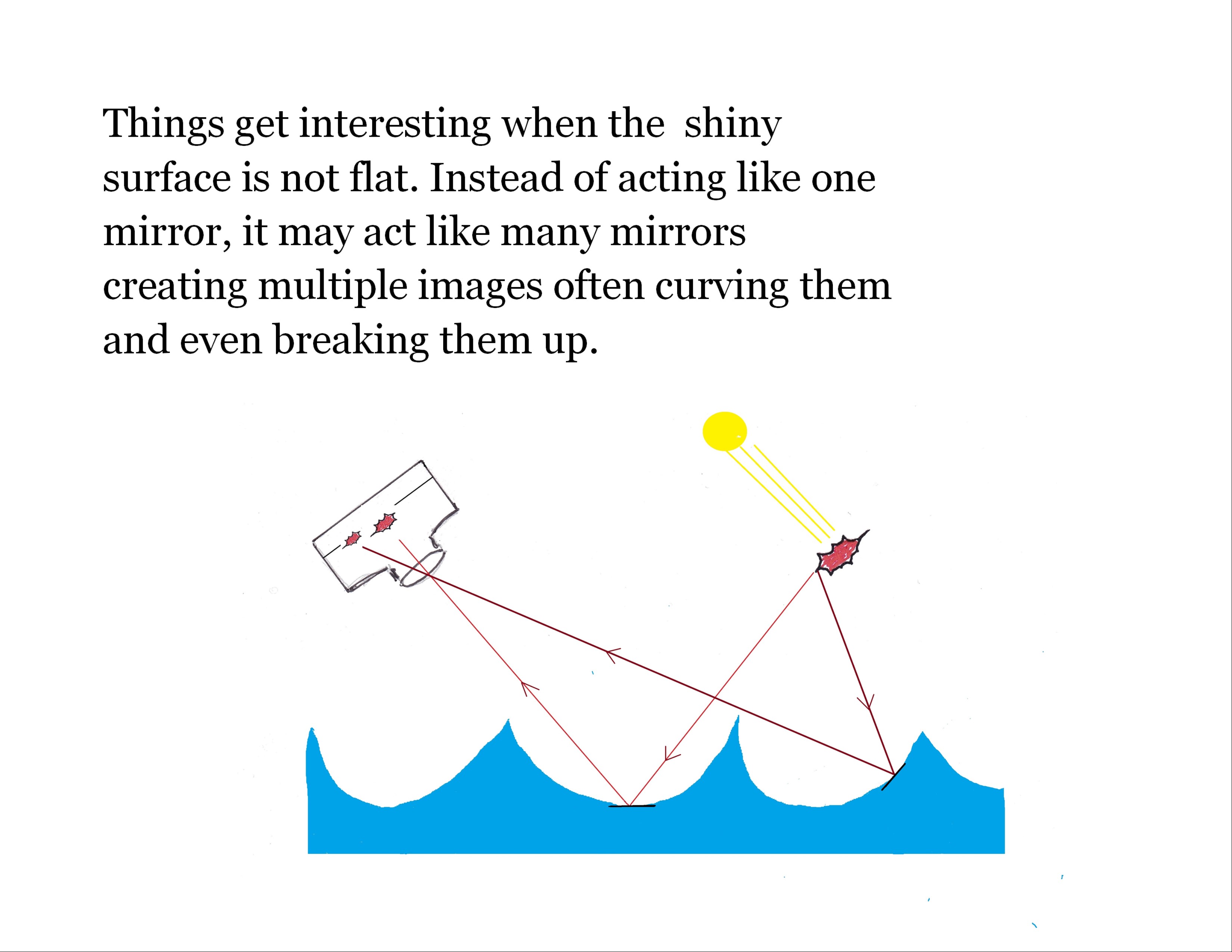You can capture these distorted images with any kind of camera. In the last part of the book, I revealed how this happens.
The key is getting in close enough and having a fast enough shutter speed to stop the action of the water.
You can get in close
with a telephoto lens or you can get in close physically in the water and then you have to line up
with the brightly lit colored
leaves on trees reflecting down to the water and then reflecting back up to your camera
and your point of view. Normally
we look from the distance and we see a nice pond or stream and we see some colors reflecting off of it. Maybe if it’s very
still you get a mirror image. If the water is moving, it’s a little distorted. If it’s moving a lot, it’s just a kind of a fluttery thing.
But when you go down in real close, you find out how much of this kind of crazy, detailed, abstract patterning is going on that
creates the seeming distortion of the reflection.
And what’s happening is that you’ve got little surfaces of water, and the water
is churned up into little waves, and each element of the surface is actually reflecting light from the source, let’s say a red maple
leaf. Each element of the water is reflecting the light in a different direction, so you get stuff all mixed together in terms of
looking at things. If you lay back on a summer afternoon, you see the clouds going along. You notice that this cloud looks
like a rabbit and now it changes into a frog. But it’s very slow. The water process is very fast! I’ve even taken videos of
the water and you don’t see these abstract patterns very much. It’s only when you do the stop action. It’s only when you
close your eyes, quickly blink them open and then close them again that you see this kind of thing.
|



